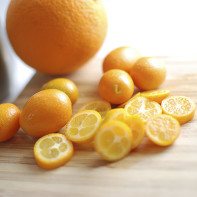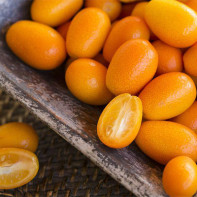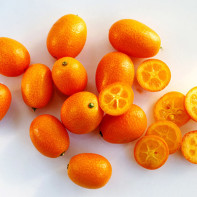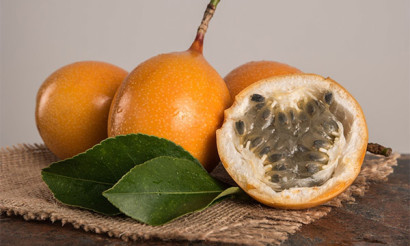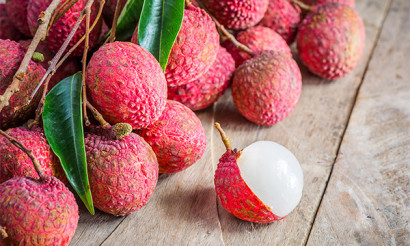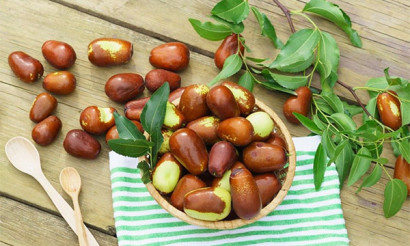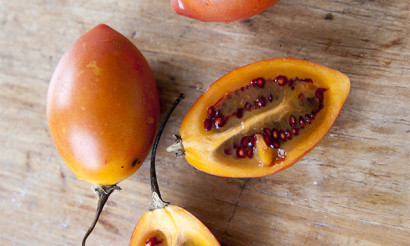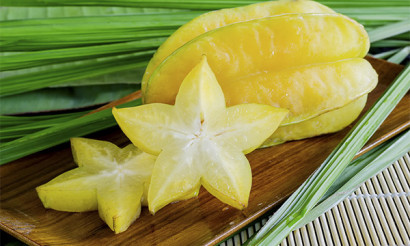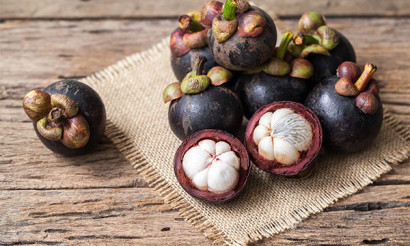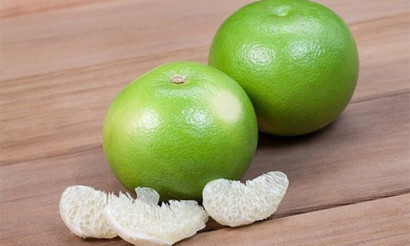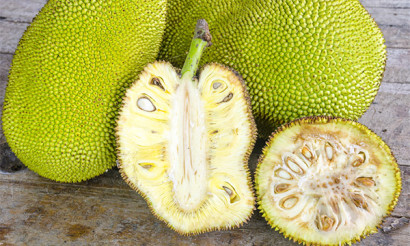Kumquat: calories, useful properties and contraindications
Quite recently, on the shelves of many supermarkets and conventional stores has appeared an unusual fruit, which resembles an orange, only its size does not exceed 5-6 cm. The name of this curiosity is kumquat.
- What is a kumquat and where it grows
- Types
- Composition and calories
- Useful properties of kumquat
- For Women
- For Men
- When Pregnant
- Breastfeeding
- For children
- For weight loss
- Benefits and harms of dried kumquats
- How dried kumquat is useful
- Kumquat Medical Applications
- Kumquat in cosmetology
- Harms and contraindications
- How to Select and Store Kumquat
- How much does a kumquat cost
- How to Eat Kumquat
- How much you can eat per day
- Can I eat them with their skin?
- Recipes for making with kumquats
- Jam
- Compote
- Candied
- Tea with Kumquat
- Kumquat Facts
What is kumquat, and where does it grow?
The fruit is a citrus fruit, growing on a small tree, reaching a height of 4.5 m, but most often it does not exceed 2.5 m. The citrus fruit is native to Southeast Asia, more specifically China, but it is cultivated in Greece, the southern United States and Japan.
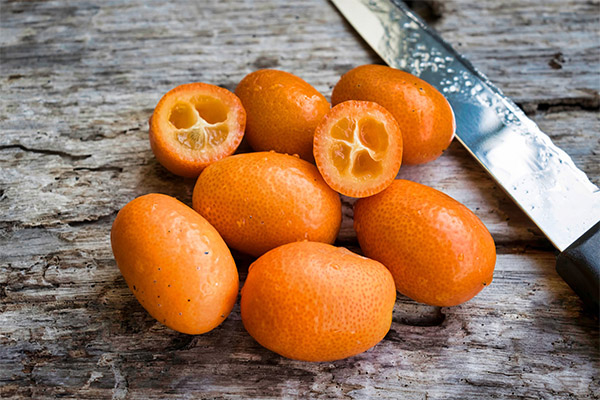
The fruit of the kumquat is bright yellow and the leaves are ellipsoidal and dark green. Because the plant is dormant for a long time after wintering, it does not bloom until a few days in mid-summer. It is not uncommon for repeated flowering to occur.
The fruit looks very much like a small orange, very juicy, tastes sweet, with a slight sourness, like a mandarin. The fruit ripens at the end of the year.
Varieties
Kumquat - the smallest citrus fruit, in different countries it is called differently. However, the most common is the "golden apple" (this name was given to it by the Chinese), the official name is fortunella.
This plant has several popular varieties, which will be discussed below:
- Nagami. Also called Fortunella margarita. This is probably the most popular species and can be found on sale in almost every major city. The plant looks like a large shrub or small tree. It blooms with white flowers and bears fruit all year round. Can tolerate frosts, grows quite slowly, prefers acidic soil. It can be grown even in the apartment. In winter watering is moderate, in summer - abundant.
- Nordmann. This type of kumquat is very similar to Nagami, also called Nordmann Seedless. From the name, we can conclude that its distinctive feature is the absence of seeds. The plant is very rare, grown only in California, USA. It is similar to Nagami in taste, but somewhat different in shape. The plant also blooms in summer, the fruit is harvested in late winter. It can also be used for interior and courtyard decoration.
- Malay kumquat. It gets its name from the fact that it grows mainly on the Malay Peninsula. The plant is usually used for decorative purposes, for example, it makes an excellent hedge. Fruits are the largest of all species, but they have a lot of small seeds. It does not tolerate low temperatures.
- Meiwa. The fruits of this species are very tasty and are the ones recommended for fresh consumption. It is considered a natural hybrid of Nagami and Marumi. The fruit resembles a large lemon. It also blooms in summer and bears fruit in late winter. The fruit has very few pips, some have almost no pips at all. Although it is not as frost-resistant, it is still able to tolerate low temperatures.
- Hong Kong kumquat. This very small and prickly plant grows only on Hong Kong Island and a small surrounding area. Fruits are bright orange in color, very small, rarely exceeding 2 cm, they are not consumed as food. It is only used as a condiment because it is not succulent and has large seeds.
- Fukushi. It is also called Obawata or Changshu. This particular type of kumquat is best suited for growing in the house and has a lush crown. The fruits are orange in color and resemble a pear in appearance, tasty and juicy.
- Marumi. This kumquat strongly resembles Nagami, but with thorns. The fruits are suitable for eating and are slightly smaller in size than Nagami's, bright, golden yellow in color.
- Mottled kumquat. The plant officially appeared in the 1990s. of the last century and is an artificially bred variety. It is the closest relative of Nagami, from which it differs in its light-colored leaves. The fruits are juicy and sour.
Composition and calories
Kumquat fruits are classified as dietary, since the caloric value of the fruit is only 70 kcal per 100 g.
Energy value per 100 g:
- Protein - no more than 2 g.
- Fats - practically none.
- Carbohydrates - about 10 g.
Kumquat also contains insoluble dietary fiber. As for the chemical composition, it contains just a huge number of useful substances: vitamins B, C, A and E, lutein, alpha carotene, nicotinic acid, as well as micro- and macroelements: iron, magnesium, phosphorus, potassium, zinc, etc.
Useful properties of kumquat
For Women
There is no woman who does not want to look beautiful. Thanks to the presence of a large amount of vitamin E, the fruit has a special effect on women. This vitamin is called the feminine or beauty vitamin and is even available as a separate medicine.
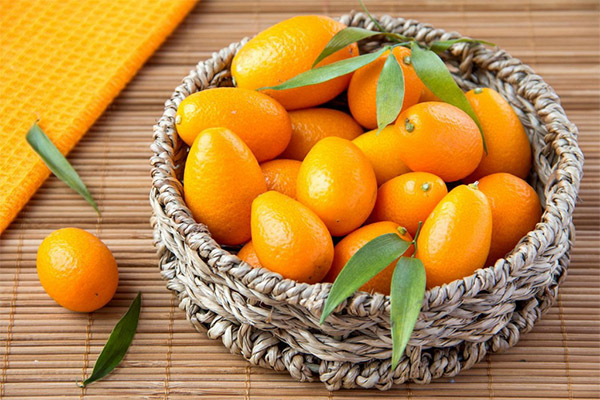
Vitamin E protects cells from harm and regenerates them, making the skin beautiful and firm. It stimulates the formation of protein and new cells. With its sufficient quantity, hair becomes soft and fluffy. During PMS it significantly reduces discomfort and pain.
An important role is also played by vitamin A. It protects the body from viruses and aging cells. It can also be attributed to the group of vitamins of youth. It is a natural antioxidant, improves vision and hearing, as well as vitamin E, promotes the rapid renewal of the epithelium, making the skin healthy and beautiful. In addition, it is an excellent remedy for the prevention of cancer. Vitamin A promotes the production of keratin - the material that makes up the foundation of hair, so a sufficient amount of it has a direct impact on their growth and strength.
For men
It's no secret that the stronger half of humanity is exposed at a fairly early age to various diseases of the cardiovascular system. Many factors contribute to this: poor diet, lack of exercise, ecology, heredity, etc. Kumquat - one of the few fruits that can be used as a therapeutic agent. It prevents the development of most diseases related to the cardiovascular system.
Unhealthy foods contain large amounts of cholesterol, which can provoke many heart and vascular diseases. It also forms plaques on the walls of blood vessels and blood clotting, which can be a major cause of stroke. Phytosterols in kumquat have a similar structure, but greatly reduce its absorption and excretion from the body.
We should not forget about iron, which is also abundant in the fruit. This element is extremely important for the body of an adult male. Iron is directly involved in the formation of hemoglobin and hematopoiesis, and delivers oxygen to every cell.
When pregnant
This small citrus fruit will be an excellent source of vitamins and valuable elements for the future mother. It should be noted that it is a highly allergenic product, so you should reduce its consumption in the second half of pregnancy.
What is useful for pregnant women kumquat:
- Calms the nervous system and improves sleep;
- removes toxins from the body;
- It has a positive effect on the function of the gastrointestinal tract;
- normalizes metabolism and lowers blood sugar;
- removes anxiety;
- Due to the presence of fiber eliminates constipation;
- Improves the body's defenses.
Just before the birth itself, it is better to refrain from eating kumquat, so that the baby does not develop an allergy.
When breastfeeding
During the breastfeeding period, mothers have to follow a strict diet so that the baby grows healthy and strong. Although kumquat contains many useful elements, and vitamin A improves lactation, it should still be excluded from the diet. As mentioned earlier, the fruit can cause allergies in a baby.
For children
As for children, it is possible to give this exotic fruit from the age of 3 years. But you need to introduce it into the child's diet gradually, increasing the amount little by little.
What is useful kumquat for children:
- The fruit contains a lot of vitamin C, which is so important for the developing body, because it promotes immunity and participates in metabolism.
- Kumquat has calcium and phosphorus, the building blocks of the bone system.
- Fiber and other substances regulate the amount of sugar in a child's blood, preventing the risk of developing diabetes.
- Iron is an important element involved in hematopoiesis.
- Magnesium protects the cardiovascular system.
- The fruit helps to cope with stress, improves sleep, and calms the nervous system.
Children should start giving kumquat with half a fruit, and over time bring this amount to several pieces. However, sometimes you need to take a break. After the first intake, you need to carefully monitor the condition of the child's body. If redness or itching appeared, you should refuse its use.
When losing weight.
Due to its useful properties, this fruit is often included in diets. Kumquat has a positive effect on the metabolism, speeding it up, removes excess fluid. Insoluble dietary fiber quickly satiates the stomach, thereby satisfying hunger. In addition, it removes toxins and food debris, which are the cause of obesity.
It is also worth mentioning that the product has very few calories, so it is impossible to gain weight by using it. Experiments have shown that with regular consumption of kumquats in a month you can lose from 2 to 8 kg, without resorting to a special diet.
Making a diet menu, you should not give preference to one kumquat. You can eat many other products with it, but you should avoid dishes that contain a lot of fat, as well as refuse to eat sweets and limit the consumption of flour products.
As for dairy products, they should be low-fat. The advantage of kumquat is also that it contains many useful elements and vitamins, which are so necessary when restricting diet.
Benefits and harms of dried kumquats
Since ancient times, people have tried to preserve certain products for a long time - so certain fruits began to be dried. Dried kumquats are relatively new on the market; they are small in size, about the size of a walnut, and come in red, yellow, or green colors. By the way, the tradition of drying citrus fruits supposedly originated in China, on the territory of modern Guangzhou.

Dried kumquat is an underrated fruit, which is used as an auxiliary in the treatment of many diseases. Its regular consumption is a prophylactic for gastrointestinal diseases. Dried kumquat retains almost all the useful substances and vitamins, so it can easily take the place of expensive vitamin complexes. It perfectly replenishes the lack of minerals and vitamins, removes heavy metal salts, improves immunity, normalizes the stool and metabolism.
Even in ancient China, dried kumquat was successfully used to treat colds, runny noses and coughs. It contains many essential oils and substances that have antifungal and antibacterial properties. It is dried kumquat is an excellent remedy for cleansing the GI tract, lowering cholesterol and eliminating toxins and impurities. To feel improvement, it is enough to eat 5-7 fruits in the morning.
To talk about the harm of dried kumquats is somewhat incorrect, because the fruit can not cause direct damage. However, like all products, it should be consumed in moderation. It is also worth paying attention to the individual intolerance.
Kumquat is a dietary product, but you should not forget that it contains a lot of carbohydrates, which can add extra pounds to those who suffer from obesity or are prone to fullness. The citrus fruit can cause harm to those who have problems with the kidneys, because when it removes poisons and toxins from the body, it drives them through the natural filters and causes complications.
What are the benefits of dried kumquats
One of the ways to preserve the fruit is curing, in which it is subjected to heat treatment. Considering that the fruit consists of 80% water, during curing it shrinks in size several times and becomes quite small.
Dried kumquat contains the same amount of vitamins and minerals as fresh, so it can replace any vitamin complex. Useful properties of dried kumquats;
- It is an excellent antifungal and anti-inflammatory agent;
- Improves intestinal peristalsis and stomach function;
- strengthens the immune system;
- removes toxins and detoxes;
- reduces the body's absorption of cholesterol;
- Prevents cell aging;
- Improves vision and helps in the treatment of the retina;
- Helps with weight loss;
- Calms the nervous system, promotes quality sleep and improves mood;
- It is an effective hangover cure.
Medical uses of kumquat
Today, kumquat is included in the list of fruits and plants that have significant medicinal properties. In the former CIS countries this citrus fruit is relatively unknown, but in Asia it is widely spread and used in folk medicine for the treatment of many diseases.
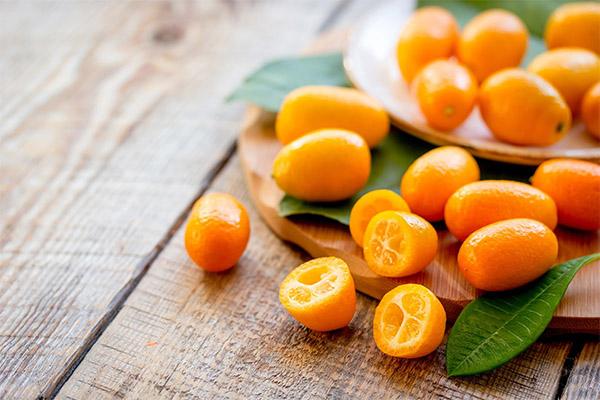
- The kumquat has more vitamins and nutrients than any other citrus fruit on the planet. It is especially prized for its high vitamin C content, which provides the body's resistance to most viruses and enhances immunity.
- Kumquat also does not accumulate nitrates, which is especially important when used as a companion medicine. Regular consumption of this fruit, whether fresh, dried or dried in the midst of an epidemic of viral diseases, will help protect against them.
- In Oriental traditional medicine, kumquat is used to treat ulcers and duodenal diseases. It is prescribed as an aid for gastrointestinal disorders, particularly for constipation.
- Regular consumption of citrus fruit is a guarantee of a strong nervous system, good sleep and a great mood. Because it perfectly eliminates toxins from the body, it is advisable to use it when you have a hangover. After eating just 200-300 grams of this fruit, the nausea and headache will go away, the stomach will work, and the general condition will improve.
- Nutritionists recommend using kumquat to people suffering from obesity, as it increases metabolism and activates the metabolism, which is important in the treatment of the disease.
Kumquat in cosmetology
Consumption of the fruit is good for the overall condition of the body, while in cosmetology the oil from the kumquat seeds is used. In combination with other oils, it is excellent for dealing with stretch marks and is used to treat scars. Just 3 drops added to a body cream will help smooth the skin, making it smoother.
Also kumquat seed oil is used to purify oily skin and make it supple. Regular use will help to look always fresh and well-groomed. For this purpose one can add 2 drops of the oil to a cream or a base oil (almond, macadamia or coconut oil) and use it at night.
Kumquat seed oil can be added to any cosmetics. It is gentle and delicate, and it is high in vitamin A, which promotes the production of collagen that protects dermal cells from free radicals.
Harms and Contraindications
As noted earlier, it is inappropriate to talk about the harm of kumquat, the fruit can not cause damage to the body. However, you need to understand that the fruit is exotic and should be treated with caution, introducing it into the diet gradually. Kumquat, like all citrus fruits, is a highly allergenic product, so allergies to it or individual intolerance is quite common.
Also, there can be problems if you eat a lot of it. The fact is that citrus has a low caloric value, which means that it is very easy to eat too much fruit. This can lead to diarrhea, flatulence and bloating of the stomach.
High carbohydrates can be a problem for diabetics, but that doesn't mean they shouldn't eat it at all. Also, you should be careful with the fruit in acute gastritis and acute peptic ulcers. It is not recommended to use it in the diet of people with diseases of the kidneys and the urogenital system, because it creates an additional load on them.
During pregnancy and breastfeeding before using it, it is necessary to consult with a specialist. If there is no such a possibility, it is better to refuse to use it.
How to choose and store kumquats
Like all citrus fruits, kumquats should be bought and stored properly. When buying the product, you need to pay attention to the following:
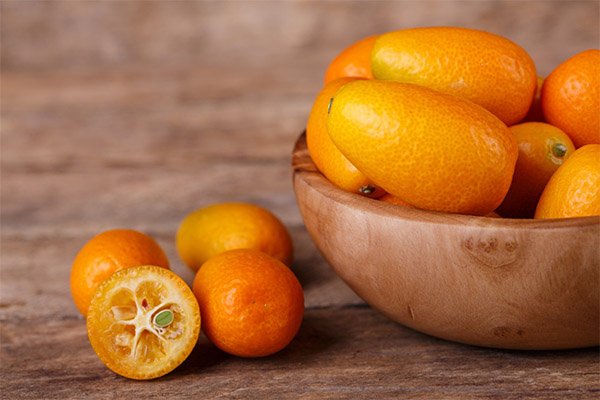
- The color of kumquat should be rich, expressive. Although many people advise to choose only orange fruits, it is necessary to pay attention to the variety, as there are light green and yellow kumquats.
- The skin should be smooth and shiny.
- It needs to be just enough hard. Being too soft means it is overripe and not suitable for long storage, while being too hard means it is not ripe.
- There should not be any damage on the skin.
As for storage, contrary to popular opinion, if you create the right conditions, even outside the refrigerator the citrus fruit can lie for a very long time. However, in apartment conditions it should not be stored more than 4 days. In the refrigerator, the fruit can last up to 3 weeks without much change.
The kumquat season begins in November and ends in spring, when there is the largest selection on store shelves. To eat it year-round, the fruit can be frozen, dried, or dried. Freezing kumquats is easy, even at home.
How much does a kumquat cost
The average price for fresh kumquats in supermarkets and markets in Russia and the CIS ranges from 625 to 1000 rubbles per kilo. The cost of dried or dried from 300 rubles per kg.
How to eat kumquats properly
How much you can eat per day
As for the amount, this is quite an individual question. Usually it is recommended to eat no more than 300 g per day, more is undesirable. In addition, the ability of the fruit to remove toxins and impurities can create an increased load on the kidneys and the urogenital system, which will have a negative impact on health. Also keep in mind that it is a "non-native" fruit, so you should treat it with caution.
Can I eat it with the peel?
Kumquat not only can be eaten with the peel, but it is necessary. It is the only citrus fruit that has this feature. It is also the rind that contains a number of substances that are excellent against fungal infections, as well as being natural antiseptics.
What you can make from kumquats: recipes
Jam
Making jam from kumquat is very simple. It does not require any special skills or knowledge in cooking.
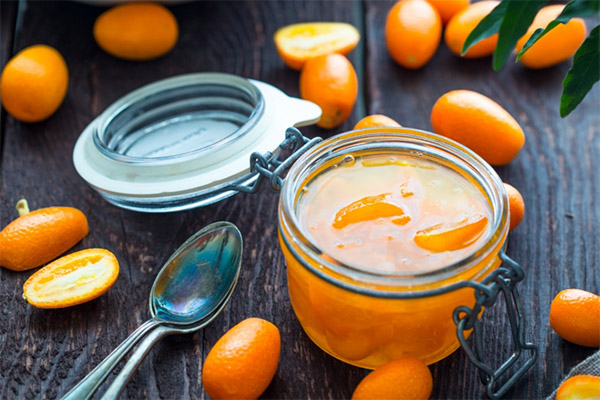
What you will need:
- Kumquat - 0,5 kg.
- Orange - 1 pc.
- granulated sugar - 0,7 kg.
How to cook:
- Kumquat fruits are thoroughly washed with running water.
- Place them on a towel and leave for half an hour to dry thoroughly.
- Then each fruit is pierced in several places with an ordinary toothpick or skewer.
- Peel the orange and squeeze out the juice.
- The juice is mixed with 100 ml of pure water and added to the granulated sugar.
- The mixture is heated to a boil and boiled over low heat until a syrup, stirring constantly.
- Pour the resulting syrup over the fruit, cover with a clean cloth and leave for 4-6 hours.
- After that, the fruit with the syrup again put on the fire, bring to a boil and boil for 20 minutes.
- The procedure is repeated several times.
- After cooking jam eat immediately or close for the winter.
Compote .
It is worth noting that the kumquat itself is a fairly versatile product, from it you can prepare many desserts and add to dishes. As for compote, from this citrus, it turns out quite sour, so it is better to add other fruits.
What will be needed:
- The citrus itself - 50 g.
- Strawberries - 100 g.
- Cherries - 50 g.
- Water - 2-2,5 liters.
- Sugar - 3-4 tbsp.
How to cook:
- First prepare the kumquat: wash in hot water and cut in half.
- Picking cherries, discarding rotten and removing the tail. Do the same with strawberries. If it is large, it is better to cut it.
- Bring water to a boil, add sugar, stir thoroughly, reduce the heat.
- After 10-15 minutes add all the fruit and boil for 1 hour, stirring occasionally.
- When the compote cools, it is stored in the refrigerator or serve.
Candied
What you will need:
- Kumquats - 10-15 pcs.
- Sugar - 1 cup.
- Water - 1/2 cup.
How to prepare:
- Citrus fruits are thoroughly washed.
- Then they are sliced across, about 0.5 cm thick, remove the seeds.
- Prepare a syrup of water and sugar.
- Pour it over sliced kumquats and leave for an hour.
- Then pour the syrup off, and arrange the pieces on parchment paper.
- Preheat oven to 180 ° C.
- Put the tray in the oven and bake for about an hour, then remove, turn the slices and return to the oven for 10-15 minutes.
- After cooling, the candied fruit is placed in containers, so it can be stored for several months.
Tea with kumquats
Especially tasty is obtained by cold tea.
What you will need:
- A bag of black tea.
- Few leaves of mint.
- Water kumquat.
- Honey.
How to prepare:
- A tea bag is brewed in the usual way.
- Then add a few leaves of mint or lemon balm, let stand for a few minutes.
- After this, chop some kumquats and put some slices into the tea.
- Give it to cool, add honey to taste.
Interesting facts about the kumquat
- The kumquat is the smallest citrus fruit in the world.
- It was only discovered in Europe in the 17th century, from when it began to be cultivated in Greece.
- Some varieties are used as a snack for alcoholic beverages (like olives).
- In Asia, particularly China, the fruit is considered medicinal and is used to treat ulcers and diabetes.
- It is the only citrus fruit that is consumed with the peel.
«Important: All information on this site is provided for informational purposes only. for your own health. Check with your health care professional before using any recommendations. health care professional before using any of the recommendations. Neither the editors nor the authors shall be liable for any possible harm caused by materials."


